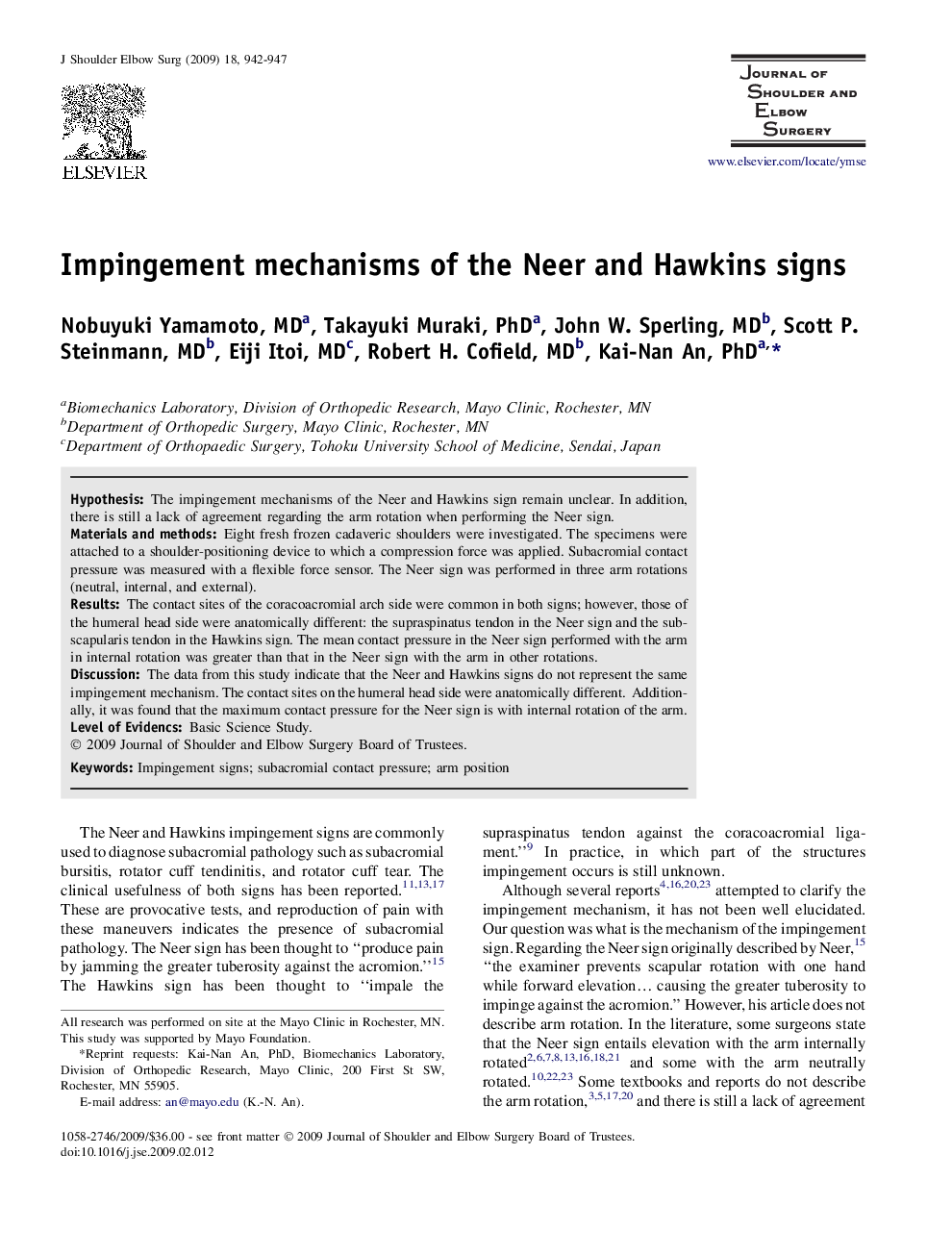| Article ID | Journal | Published Year | Pages | File Type |
|---|---|---|---|---|
| 4075098 | Journal of Shoulder and Elbow Surgery | 2009 | 6 Pages |
HypothesisThe impingement mechanisms of the Neer and Hawkins sign remain unclear. In addition, there is still a lack of agreement regarding the arm rotation when performing the Neer sign.Materials and methodsEight fresh frozen cadaveric shoulders were investigated. The specimens were attached to a shoulder-positioning device to which a compression force was applied. Subacromial contact pressure was measured with a flexible force sensor. The Neer sign was performed in three arm rotations (neutral, internal, and external).ResultsThe contact sites of the coracoacromial arch side were common in both signs; however, those of the humeral head side were anatomically different: the supraspinatus tendon in the Neer sign and the subscapularis tendon in the Hawkins sign. The mean contact pressure in the Neer sign performed with the arm in internal rotation was greater than that in the Neer sign with the arm in other rotations.DiscussionThe data from this study indicate that the Neer and Hawkins signs do not represent the same impingement mechanism. The contact sites on the humeral head side were anatomically different. Additionally, it was found that the maximum contact pressure for the Neer sign is with internal rotation of the arm.Level of EvidencsBasic Science Study.
